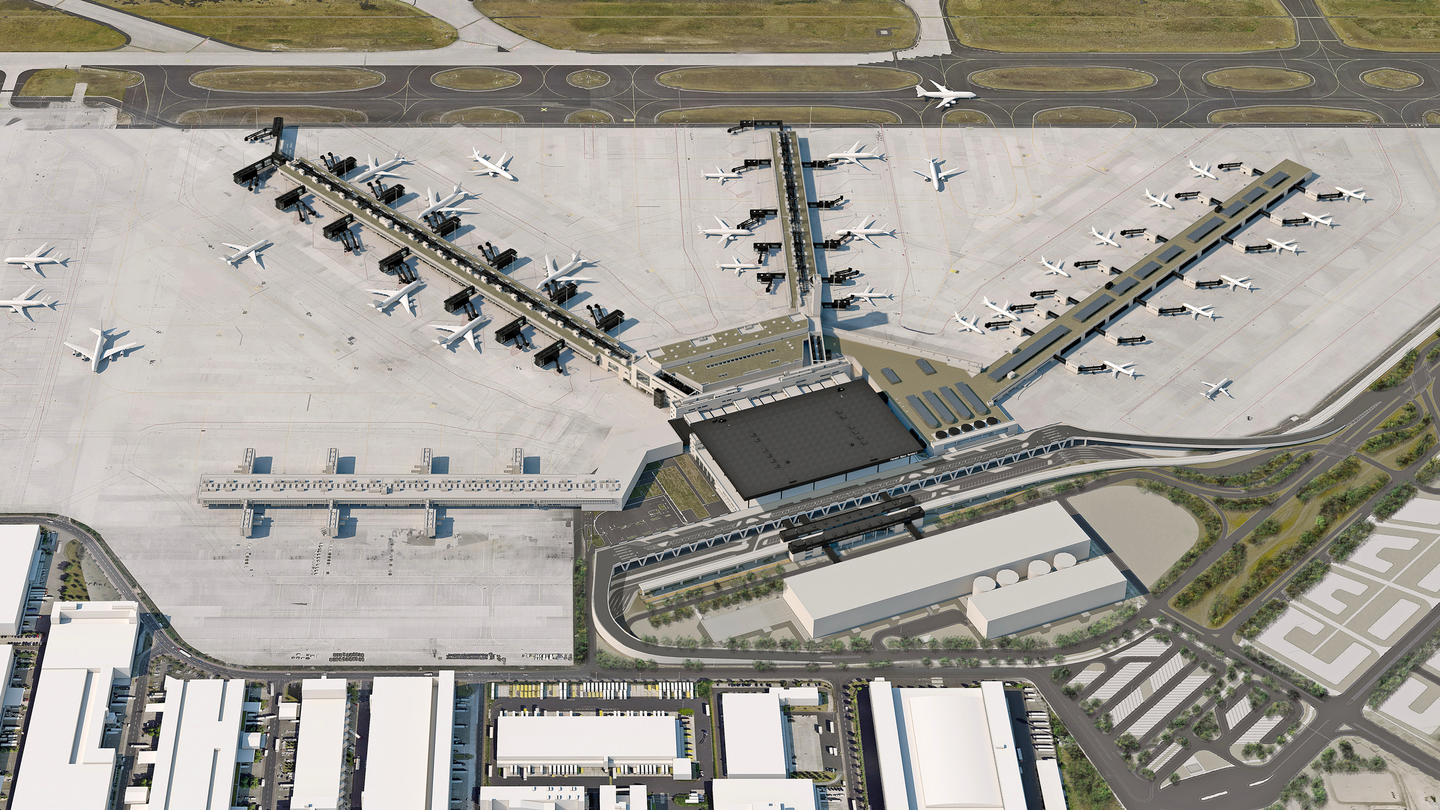LOGO InfraConsult
LOGO InfraConsult is a leading German consultancy and engineering firm with offices in Frankfurt and Berlin. The firm specializes in complex construction projects, particularly airport facilities, but also works on university buildings, offices, production facilities, and distribution centers. The common denominator is project complexity—complexity that needs to be managed effectively.
Andreas Klein is one of the firm’s two managing directors. Fortunately, he was willing to take some time to explain why and how they are using BriefBuilder in their projects.
Can you tell us a bit about your work?
I co-manage LOGO with my business partner, Huascar Rodriguez. Our job is to lead the firm, to be visible in the market, and to ensure we add value for our customers. We are also deeply involved in projects—thankfully, as that is where the real action is.
Currently, I am very busy with one of our key clients, Fraport, which operates Frankfurt Airport. Fraport is constructing Terminal 3, a brand-new terminal, and is refurbishing the existing Terminal 2. These projects are typical LOGO projects because they are technically, functionally, and organizationally complex. Our role is to get everyone on the same page and ensure that the project outcomes meet Fraport’s requirements.
The projects at Frankfurt airport encompass more than ten thousand spaces. Having a professional requirements management tool is absolutely essential in such a case!
In both projects, we are using BriefBuilder. I can honestly say these projects are challenging from a data perspective, as they involve managing more than ten thousand spaces, each with its own set of requirements. Having a professional requirements management tool is absolutely essential in such a case!
Why are you using BriefBuilder?
Previously, we worked with Excel and we have also tried out several requirements management tools. The problem with most of such tools is that they very generic. The good thing of BriefBuilder is that it is specifically designed for construction projects. Its structure and features allow you to start working with it immediately.
Another strength of BriefBuilder is that its functionality goes beyond the briefing stage. As you may know, there is a German standard for briefing (the DIN 18205), but that standard only covers the briefing stage and ignores everything that comes after it, like change management, quality control, and the integration of requirements with BIM models. The great thing about BriefBuilder is that it helps us cover all those aspects, making it a true requirements management tool, not just a briefing tool.

The new Terminal 3 at Frankfurt Airport covers an area the size of 25 soccer fields and will therefore have room to handle 25 million passengers a year once it is fully completed. The architecture is ultramodern. Numerous large pane-glass windows flood the generously dimensioned halls and areas with daylight, making it possible to minimize the use of artificial light sources. The terminal requiring only minimal heating thanks to energy-efficient construction methods and state-of-the-art technologies. Design: Christoph Mäckler Architects. Image: courtesy of Fraport
How do your clients respond to the use of BriefBuilder in their projects?
Some of our clients are immediately enthusiastic, while others are more hesitant. It very much depends on what people are used to and what they expect. It is a new collaborative way of working, so in some projects it takes some effort. You have to show it to people, explain the benefits, and engage them. Yes, that may take some effort during the starting phase of the project, but it is worth it because our clients save time and resources in the following planning phases.
What’s your favourite BriefBuilder feature?
I like BriefBuilder’s overall setup and its user interface. It is all very intuitive. It is easy to define spaces, systems, and other project parts. Of course, there are all sorts of settings, but those are mostly extras, and they don’t hold you back from working in BriefBuilder.
I like BriefBuilder’s overall setup and its user interface. It is all very intuitive
Any recommendations?
In general, my recommendation is to combine briefing and design activities. Developing a brief is very much a ‘paper’ exercise. It involves a lot of words and numbers, even when working in BriefBuilder. You shouldn’t forget to test and explore the feasibility of those words and numbers in design studies while preparing the brief. Will the program fit on the chosen site? What would a potential floorplan look like? How would changes in sizes affect the building’s volume and the project’s budget?
Early-stage design studies will help you create a better brief, get a better understanding of the project, and have a better grip on the project’s budget.

Another of LOGO’s key projects is the new terminal that will be build for Zürich Airport, called Dock A. The new building will be built largely of sustainable wood on the passenger levels. This is unique for a terminal building of this size. The new dock’s roof and the dock base will be used for photovoltaics, covering around two thirds of the dock’s annual electricity requirement. The new building will thus make a major contribution to Flughafen Zürich AG’s ambitious CO2 reduction strategy. Design: BIG and HOK. Image: courtesy of Zürich Airport.
Many thanks to Andreas for sharing his valuable insights!
More info about LOGO can be found here.

